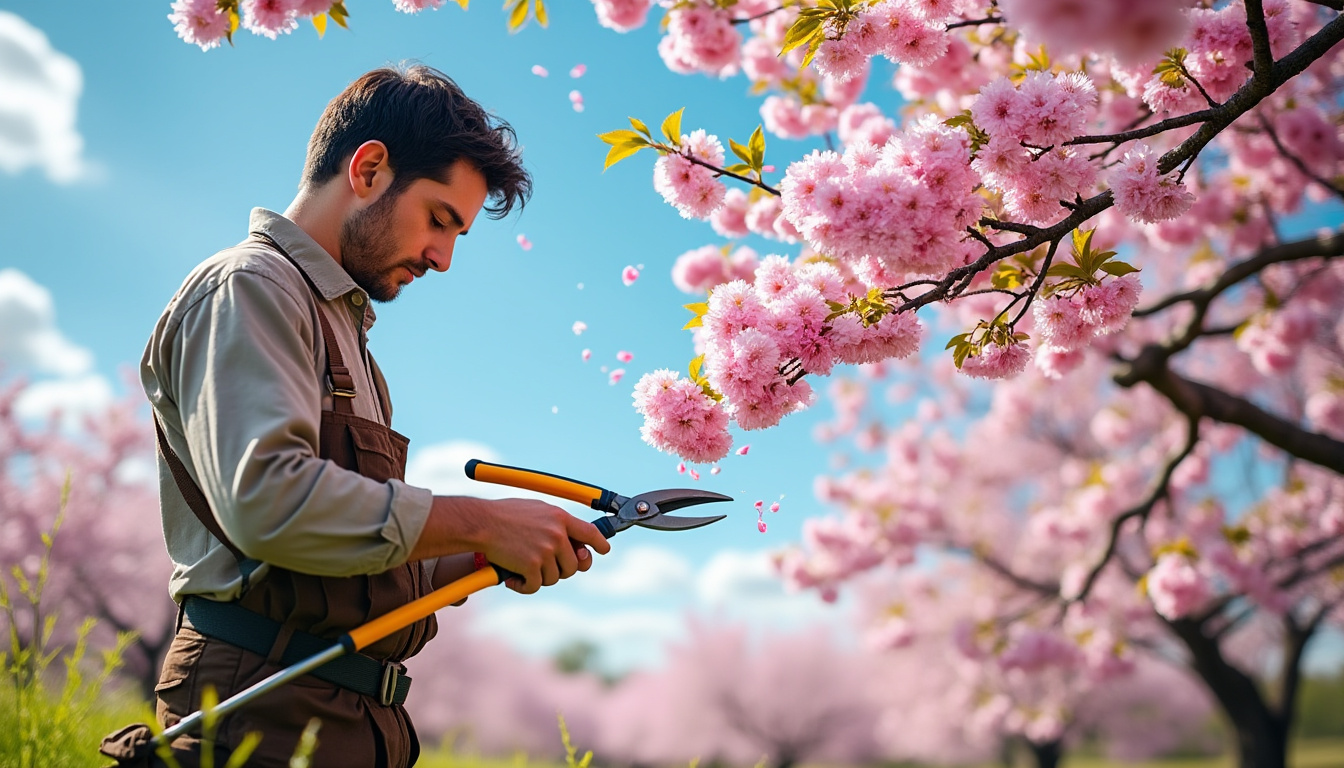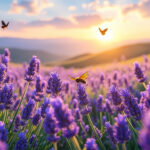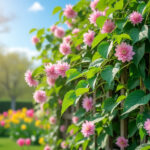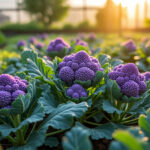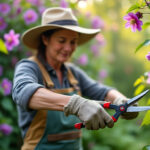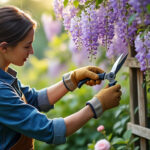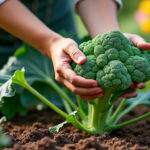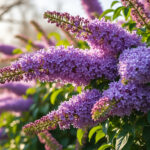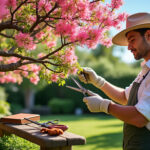This article explores the optimal timing and techniques for pruning cherry blossom trees, ensuring that gardeners can maintain their health and aesthetic appeal. The beauty of cherry blossoms is celebrated worldwide, but achieving a flourishing display requires careful attention to care practices, particularly pruning.
Understanding the Life Cycle of Cherry Blossom Trees
The life cycle of cherry blossom trees is intricate, reflecting their cultural significance and biological needs. These trees, scientifically classified under the genus Prunus, display a variety of blossoms that are often found in different hues, predominantly pink and white. Recognizing their blooming cycle is essential for effective care and maintenance.
Cherry blossom trees typically blossom in the spring, with the timing varying by species and geographical location. The blooming period can last anywhere from a few days to a couple of weeks, depending on environmental conditions like temperature and sunlight. This period of stunning visual appeal is essential for attracting pollinators, which play a critical role in the reproductive process of these trees, ensuring their longevity and health.
The Importance of Timing in Pruning
Understanding when to prune cherry blossom trees is crucial. Timing affects not only the health of the tree but also its ability to produce blossoms in subsequent seasons. Pruning during the wrong season can result in reduced blooms or even damage to the tree. Generally, the best time to prune cherry blossom trees is late winter to early spring, just before new growth begins. This period allows for the removal of dead or diseased branches while promoting healthy growth as new buds begin to form.
- 🌱 Late Winter: Begin pruning before the emergence of new leaves.
- 🌸 Early Spring: Optimal time to encourage healthy blooming.
- 🌼 After Blooming: Post-bloom pruning can focus on shaping and maintaining tree structure.
This timing ensures that the tree’s energy is directed towards producing new growth and enhancing its floral display. Pruning too late in the season, when the tree is actively growing, can lead to stress and weak branches that are prone to breakage under the weight of flowers.
| Season | Pruning Activities | Benefits |
|---|---|---|
| Late Winter | Remove dead, damaged, or diseased branches | Promotes tree health and prepares for new growth |
| Early Spring | Shape the tree and encourage new growth | Increases bloom capacity and improves air circulation |
| Post-Bloom | Thinning and shaping | Enhances light penetration for better foliage growth |
Choosing the Right Tools for Pruning Cherry Blossom Trees
The process of pruning cherry blossom trees is significantly influenced by the tools utilized. Effective pruning requires clean, precise cuts to promote healthy healing and minimize stress on the tree. Proper tools ensure that each cut is made efficiently, preserving the integrity of the tree’s structure.
A variety of tools are essential for careful pruning, including:
- ✂️ Pruning Shears: Ideal for small branches and delicate cuts.
- 🔪 Lopping Shears: Suitable for cutting slightly thicker branches.
- 🪓 Hand Pruners: Essential for larger branches that require more power.
Brands like Fiskars, Felco, and Gardena provide high-quality arborist supplies that are reliable and effective for various pruning tasks. Whether dealing with thin branches or thick wood, having the right tools will ensure a clean cut and minimize damage to the tree.
Utilizing the appropriate pruning tools not only simplifies the process but also enhances safety for the gardener. Using dull tools can lead to jagged cuts, increasing the risk of disease entering the pruning site and leading to overall compromised tree health.
| Tool Type | Best Use | Recommended Brands |
|---|---|---|
| Pruning Shears | Small branches and buds | Felco, Fiskars |
| Lopping Shears | Branches up to 2 inches | Echo, Stihl |
| Hand Pruners | Branches over 2 inches | Black+Decker, WORX |
When to plant lupin seeds for optimal growth
Techniques for Successful Pruning of Cherry Blossom Trees
Executing the proper pruning techniques is essential for maintaining the health and beauty of cherry blossom trees. Each cut should be aimed at improving the overall structure of the tree, enhancing light penetration, and promoting air circulation. Effective techniques include thinning, shaping, and removing deadwood.
Thinning involves selectively removing branches to reduce crowding and improve airflow. This technique is particularly beneficial to older trees that may have dense growth. Shaping focuses on establishing a balanced tree structure, fostering an aesthetically pleasing silhouette.
- 🌿 Thinning: Removes excess branches to prevent overcrowding.
- ✂️ Shaping: Establishes a balanced and inviting appearance.
- 🌳 Removing Deadwood: Ensures health by eliminating disease risk.
It’s advisable to prune gradually, assessing the tree’s response to each cut. Over-pruning can lead to stress and hinder growth, so one should aim to see positive results before proceeding with more extensive cuts.
| Technique | Description | Benefits |
|---|---|---|
| Thinning | Selective removal of branches | Improved airflow and light penetration |
| Shaping | Creating an attractive silhouette | Enhanced aesthetic appeal |
| Deadwood Removal | Eliminating unhealthy branches | Reduced disease risk |
Post-Pruning Care for Cherry Blossom Trees
After completing the pruning process, it is essential to provide adequate care to the cherry blossom trees to promote recovery and encourage vibrant growth. Effective post-pruning care will directly contribute to the tree’s resilience and health.
Watering plays a vital role in recovery. Deep watering after pruning will help the tree adjust to its new structure and allow energy to be directed towards new growth. Additionally, applying mulch around the base can retain moisture and suppress weed growth, creating a more favorable environment.
- 💧 Deep Watering: Encourages recovery and supports new growth.
- 🌰 Applying Mulch: Retains moisture and prevents weeds.
- 🌼 Monitoring for Pests: Early detection of problems ensures a healthy tree.
Furthermore, regularly monitoring the tree for signs of pests or diseases is crucial. Healthy trees are less susceptible to infections; thus, maintaining a proactive approach will facilitate early intervention when necessary.
| Care Activity | Description | Importance |
|---|---|---|
| Deep Watering | Watering thoroughly to encourage recovery | Supports new root growth |
| Applying Mulch | Layer of organic material around the base | Helps retain moisture |
| Monitoring for Pests | Regular checks for signs of infestation | Immediate action prevents further damage |
Frequently Asked Questions
- When is the best time to prune cherry blossom trees?
The optimal time is late winter to early spring, just before new growth starts. - What tools should I use for pruning?
Quality pruning shears, lopping shears, and hand pruners are essential for effective cuts. - Should I prune after blooming?
Yes, post-bloom pruning is beneficial for shaping and maintaining tree structure. - How much should I prune?
Prune selectively to avoid over-stressing the tree. Aim for gradual adjustments.

